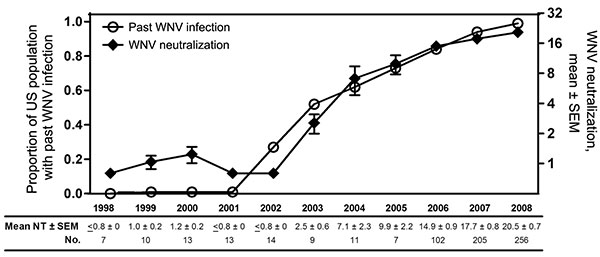Volume 15, Number 10—October 2009
Dispatch
West Nile Virus Infection in Plasma of Blood and Plasma Donors, United States
Figure 1

Figure 1. West Nile virus (WNV) neutralization titers of US plasma-derived immune globulin intravenous (human) (IGIV) lots by year of production and estimated percentage of the US population with past WNV infection by year. WNV neutralization titers were determined either for retention or lot release samples of 3 IGIV products produced during 1998–2005 or for a considerable proportion of Gammagard Liquid/KIOVIG lots produced during 2006–2008. Results are shown as mean ± SEM (limit of detection <0.8) by year of product release. For 5% of IGIV samples, titers were multiplied by 2 for comparison with the 10% IGIV samples at equivalent immunoglobulin concentrations. The percentage of the US donor population with past WNV infection was calculated from the number of neuroinvasive cases reported per year and the estimated ratio of neuroinvasive cases to total cases of WNV infection.